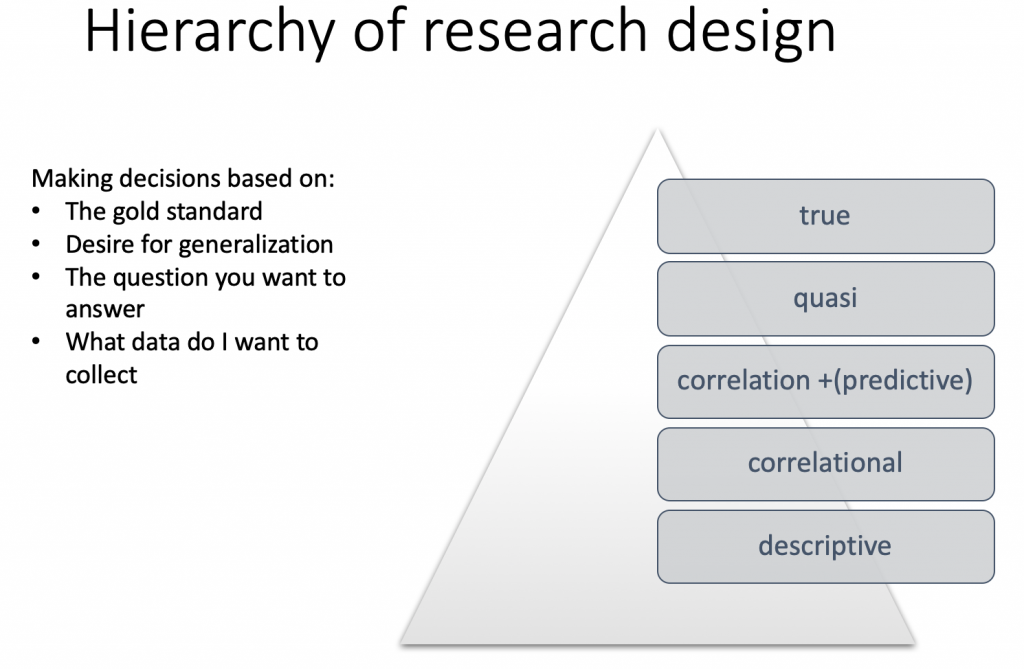Honing a Research Question
I know this is only the beginning of a longer process of many iterations, but the past few days in the DS2 class have brought forward the fine-tuning needed when honing a research question. The importance of the question to drive the research and focus the report can’t be understated. I am now significantly more aware of these elements in the academic research reading that I am doing. The importance of the question is applicable to each of the types of research we’ve been discussing and examining. Each time we talk about an article, we are asked to look for the type of research (see diagram) and the three statements – purpose, question and hypothesis. These are not always explicit or evident since the question is often framed as a statement, not in a question format. Sometimes there is no hypothesis since the research in the field is insufficient for an educated or informed guess.

So the past several days have focused on honing the research questions we’ve each crafted. We were given 5 minutes to write the question, then did ‘speed dating’ to share these with one other person in a 3 min exchange of questions. During that time we were able to ask questions to clarify the research question being presented. This process was repeated three times, so by the end, the question was clarified and more specific.
This was followed up with a number of classmates putting their questions out for critique and further questioning, which included some pointed observations from our instructors. This was a daunting task for those who came forward, but in the end they were left with a question that was more specific, explicit, and clear.
Key elements that need to be in the research question, as discussed in class, include:
- variables: operationalized and defined
- context of the research
- participants – all groups including the control group
- directions – positive, negative, no difference, <, >, (if this is being hypothesized)
So here are the elements for my research question – as they stand now, but I know this will be further honed and iterated in the coming weeks, months and year.
- variables: operationalized and defined
- open education practices (as outlined and described by Nascimbeni & Burgos (2016) using the Open Educators Factory (with supporting research and questionnaire);
- digital literacies (defined and measured using COMDID from research by Lázaro, Usart & Gisbert (2019) framed from the DigComp-EDU developed by the European Commission for Digital – currently in a testing phase with self-assessment survey questions.
- context of the research – faculties of education across Canada
- participants – selected sampling from known open educators in Faculties of Education in Canada (Paskevicius, Hengstler, Roberts, Blomgren, Stewart, etc.) and a randomized sampling of respondents from a call to complete the survey (I’m not sure if this should include BOTH teacher educators and current or recent teacher candidates (e.g. S. Lalonde as one example) or if I should be selective in my focus on just one of these two possible populations.)
- directions – I suspect there will be a positive correlation between measures on the COMDID and the Open Educator Factory responses.
The question:
What is the relationship between self reported open educational practices and perceived digital literacy competencies with teacher educators and preservice teachers in faculties of education in Canada?
The next step is to explain the “SO WHAT” or “why is this important” so this is grounded in current research, particularly around global digital literacies and competencies, directions in global contexts toward open educational practices, and how this potentially impacts Canadian faculties of education.
Now I’m putting this question to the test. I need to further hone this question, so I’m putting this out to my network of critical friends for comments and feedback. With their help and support, this research question will continue to evolve.
Please add a comment or query below so this can become a conversation about this possible research direction.
